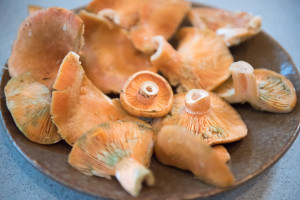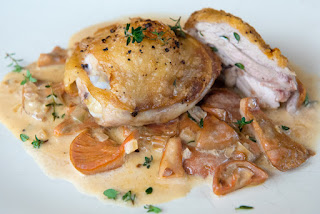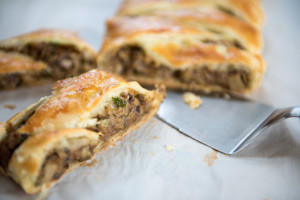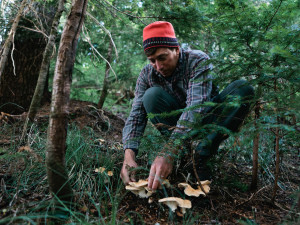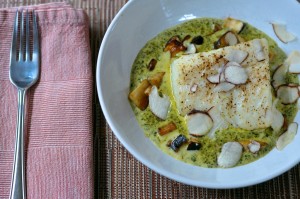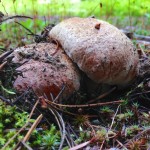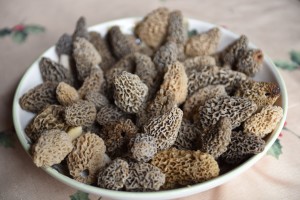 The Southeast has intrigued me for a long time for its diversity of plants and fungi, a diversity I’d mostly read about in books.
The Southeast has intrigued me for a long time for its diversity of plants and fungi, a diversity I’d mostly read about in books.

The last time I’d spent any significant amount of time in the region was twenty-five years ago, during a spring break from college that involved some sketchy camping and maybe a little foraging for beer. Earlier this month I had a chance to visit again and speak to mushroom clubs in Georgia, South Carolina, and North Carolina. Though fungal diversity was nowhere near what it will be come summer, the spring wildflowers were out—and so were the morels.

Aside from the pesticide-laden morels that fruit in California’s olive orchards in late winter, Georgia represents the beginning of morel season for many a roving hunter in the U.S. It was April 1 when I set forth on my first hunt in the Goober State, and I didn’t come away with any fool’s gold—just this big fat yellow below, a Georgia peach of the fungal variety.

The habitat was so different from what I’m used to in the West. Along with members of the Mushroom Club of Georgia, we scouted river bottoms, looking for concentrations of green ash. One spot within the Atlanta Metro area, filled with dog-walkers and picnickers, delivered in spades. Meanwhile, I was trying to wrap my head around all these hardwood trees that were just beginning to leaf out. Oaks and hickories, buckeyes and magnolias—too many to count, much less identify.

And like the trees, the morels were different too. Depending on which taxonomy you’re following, they carry the scientific name Morchella americana or Morchella esculentoides. Most people call them yellows. I don’t see them very often in the Pacific Northwest, though they do fruit in a few cottonwood bottomlands in select locales.

Another difference with eastern morel hunting: the beasties. I became fanatical about checking myself for ticks. I have friends who have gotten Lyme’s disease and it’s no fun. One of the little buggers managed to get its teeth into me and now I’m keeping tabs on the wound, hoping it doesn’t grow into a bull’s-eye.

The other hazard is from the plant kingdom: poison ivy. The nasty stuff was all over the woods, and at one point while I was taking a breather in the woods, leaning casually against one of the many bewildering, unidentifiable hardwoods, my companion suggested I might want to remove my hand from the thick vine of poison ivy that was trellising up the trunk. Doh!

While in Atlanta, I also loaded up on some of the local cuisine. Georgia Organics hosted an amazing dinner that featured some of the city’s notable chefs. And if you’re a Sichuan geek like me, you’ll want to run—not walk—straight to Masterpiece restaurant in nearby Duluth. I can easily say it was the best Sichuan I’ve had since going to Sichuan Province back in the summer of 2011 (don’t miss the dry-fried eggplant or the chicken with a bazillion hot chilies).


In South Carolina, my next stop, I visited Mushroom Mountain, where cultivator Tradd Cotter is growing enough mushrooms, such as these elm oysters pictured at right, to interest Whole Foods. As for the wild ones, the yellows that I found were much smaller and grew mostly with tulip poplars. Locals call them tulip morels. Cryptic and incredibly hard to find (see below), they hid among the leaf litter, often barricaded by poison ivy. With help from the South Carolina Upstate Mycological Society, affectionately known as SCUMS to its members, we sleuthed them out, again in river bottom woods.

The Asheville Mushroom Club in North Carolina was my last stop, but we snuck over the border into Tennessee for morels, where we found the tulip variety as well as my first eastern black morels, pictured below, which proved tricky to spot given all the fallen leaves.

We hunted an area on the edge of Smoky Mountain National Park, where trillium, violets, trout lilies (pictured above) and other wildflowers were in full glorious bloom. The Smokies, I’m told, hold the highest plant biodiversity in North America. Whereas we have one species of trillium in the Pacific Northwest, the Southeast has forty!
Next time—and there will definitely be a next time—I’m returning with my backpack and tent so I can disappear into the Smokies or the Blue Ridge for a spell. Brook trout with wild mushroom stuffing, anyone?
Like this:
Like Loading...
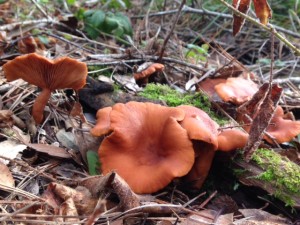 CANDY CAPS ARE a complex of species in the milk cap genus, Lactarius. They’re noteworthy for smelling of maple syrup once dried, effectively putting mushrooms on the dessert menu. Two species of candy cap are commonly encountered in coastal California: L. rubidus and L. rufulus. The latter grows with oaks and is quite mild, but the former—if dehydrated at a low temperature (I think we set our dryer to 95 degrees)—is wonderfully fragrant. We found hundreds of them recently growing among a stand of old Monterrey pines.
CANDY CAPS ARE a complex of species in the milk cap genus, Lactarius. They’re noteworthy for smelling of maple syrup once dried, effectively putting mushrooms on the dessert menu. Two species of candy cap are commonly encountered in coastal California: L. rubidus and L. rufulus. The latter grows with oaks and is quite mild, but the former—if dehydrated at a low temperature (I think we set our dryer to 95 degrees)—is wonderfully fragrant. We found hundreds of them recently growing among a stand of old Monterrey pines. 1 small handful dried candy caps
1 small handful dried candy caps
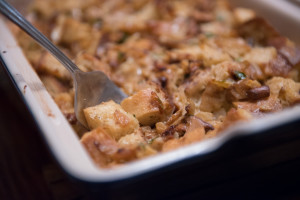 THIS TOTALLY UN-FUSSY bread pudding shines with a medley of wild mushrooms.
THIS TOTALLY UN-FUSSY bread pudding shines with a medley of wild mushrooms.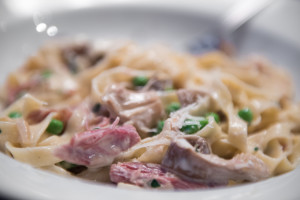 I’VE MADE PLENTY of Asian-style dishes with wild oyster mushrooms, like
I’VE MADE PLENTY of Asian-style dishes with wild oyster mushrooms, like 
 I’m happy to report that my article “Into the Woods” for
I’m happy to report that my article “Into the Woods” for 